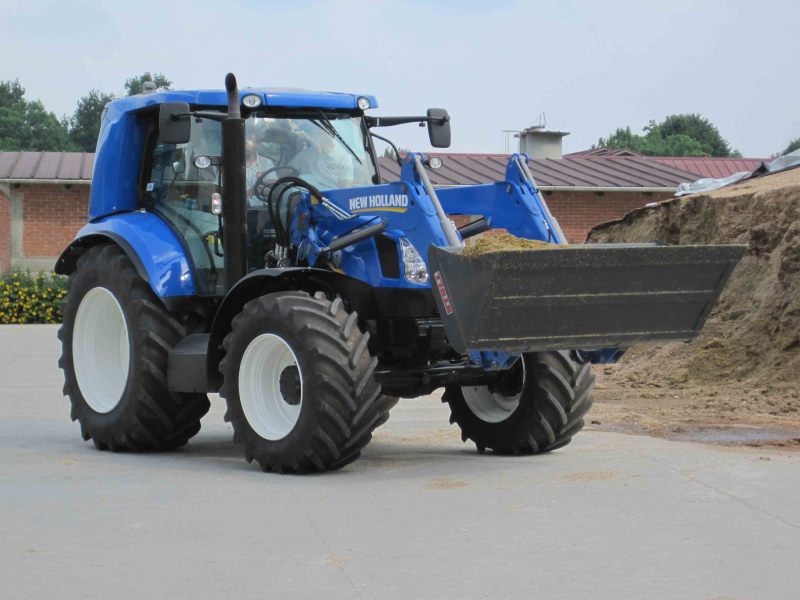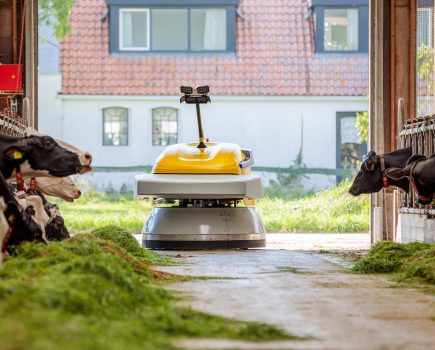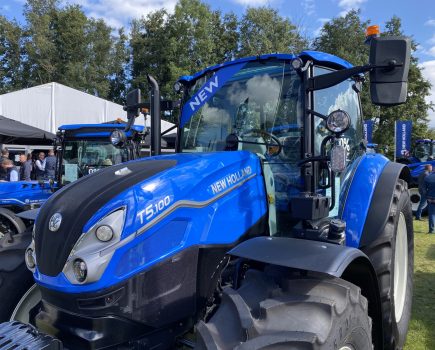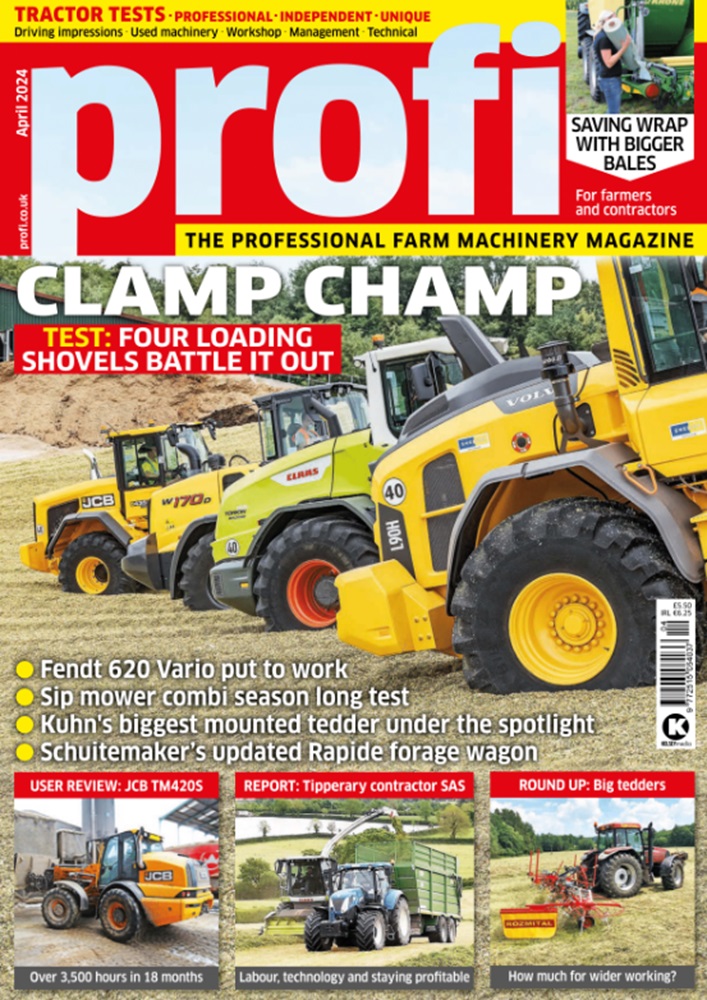A New Holland methane-powered tractor is only four or five years away from being commercially available. Indeed the technology is pretty much already in place, with a unit now employed on daily yard duties at La Bellotta farm, near Turin, Italy.
“Basically it’s now a matter of putting hours on the clock, to see how the tractor performs under different test conditions,” says New Holland’s Mark Howell. “The engineers have done their bit. It’s now down to marketing — to decide on the level of hp and number of models to offer, and to identify the target customers for the first phase of methane tractor production.”
The renewed confidence in hitting the planned on-sale date of 2019/2020 comes largely as a result of the success and simplicity of the Generation 2 methane tractor when compared with its Generation 1 predecessor. Whereas the original tractor was powered by a high-revving 3.0-litre F1C compressed natural gas (CNG)/petrol engine out of an Iveco Daily van, the current unit sources its muscle from a lower-revving NEF six-cyl 5.9-litre CNG motor from an Iveco Eurocargo truck. The latter 179hp motor is far better suited to a farming application than its 136hp predecessor, according to Mr Howell.
“Because the F1C engine ran at higher revs it required a drop box in the tractor and isolators to remove the vibrations. The Generation 2’s NEF unit needs none of these.”
In addition, the NEF engine is a structural unit that’s very similar in size to the 6.75-litre motor within the standard T6.175 model on which the prototype methane tractor is based. This means the CNG installation in the Generation 2 methane tractor is relatively straightforward; there’s no need for much modification to the standard T6, with New Holland able to simply bolt on its existing transmissions.
Indeed the only real challenge has been working out how to accommodate the nine compressed methane tanks around the tractor, a task that New Holland’s designers seem to have accomplished without too much visual impact — other than to what are now rather prominent rear pillars (see pictures). Total methane carrying capacity is 52kg — the equivalent, in terms of work capability, of about 60 litres of diesel (around four to five hours’ working time).
To drive, the methane tractor experience is much the same as in any other T6. The cab controls are all the same; even the fuel gauge is the same. And despite New Holland’s claims of greatly reduced noise levels, subjectively it sounds much the same, too. During our very brief ride on the loader-equipped methane tractor at La Bellotta, the only difference of note was the reduced sightlines to the rear caused by those bulky rear pillar gas tanks.
In terms of in-field performance, we’re in no position to comment, although, given the similarities of New Holland’s suggested power and torque curves for T6 diesel vs T6 methane, there’s no reason to think the gas tractor will be at any disadvantage. Granted, the four- to five-hour running time will be an issue for fieldwork, but New Holland is working on solutions for that, including gas-carrying ballast on the tractor and perhaps also gas-carrying capability for the associated implements.
The bottom line is that the methane tractor’s ultimate success or failure will probably be determined more by logistics and economics. Will methane become more readily available to farmers without biogas units on their farms? For those farmers who are running biogas units — the most likely initial customers for the methane tractor — what will be the on-farm cost of upgrading and compressing their biogas product (51% methane) into the bio-methane product (98% methane) that’s required by the tractor? And what level of government subsidy will be offered to those using a fuel that’s claimed to emit up to 80% fewer pollutants than diesel?
As for the actual running cost of diesel vs methane, New Holland claims savings of 20-40% from powering a tractor on gas. And those figures rise to an even more impressive 55% when the same comparison is made with bio-methane from a biodigester, assuming a certain level of government support. So, there’s a powerful argument for methane and bio-methane over diesel: equivalent performance, reduced cost fuels and cleaner emissions. Yet there are clearly still issues to be resolved and many questions to be answered. The next five years are going to be busy ones for the marketing men at New Holland.















